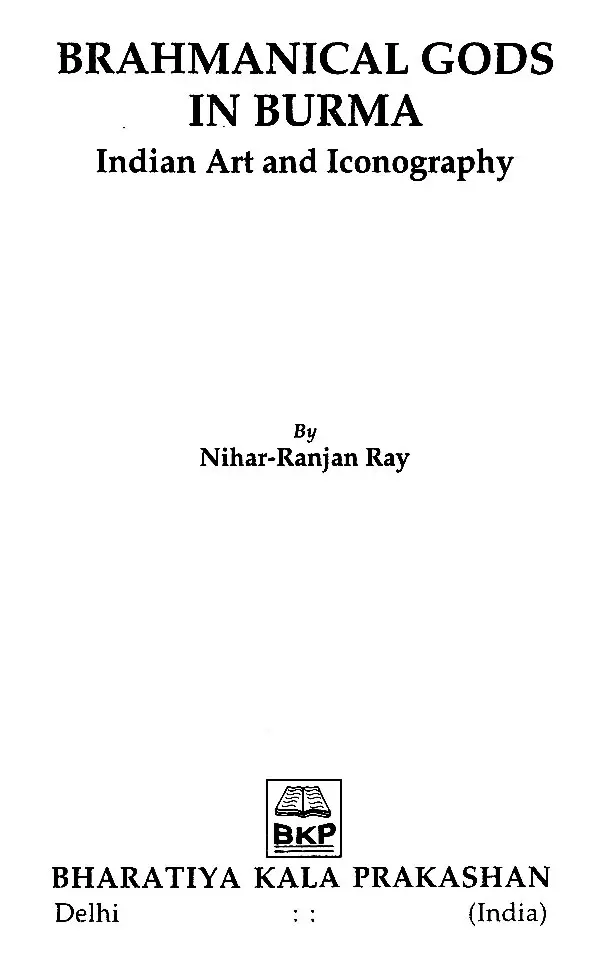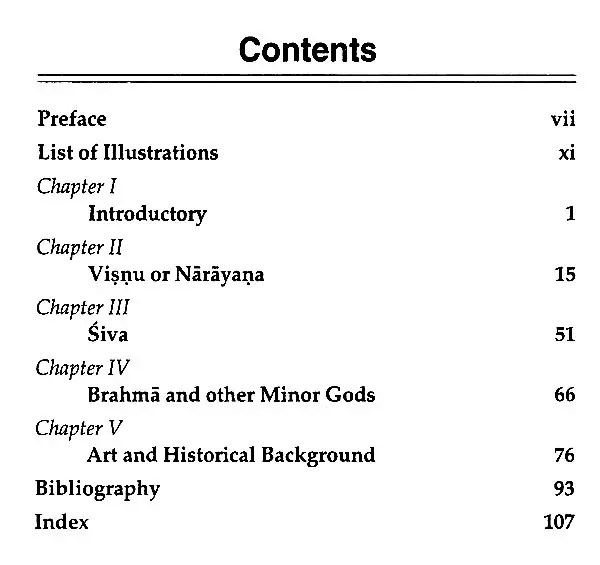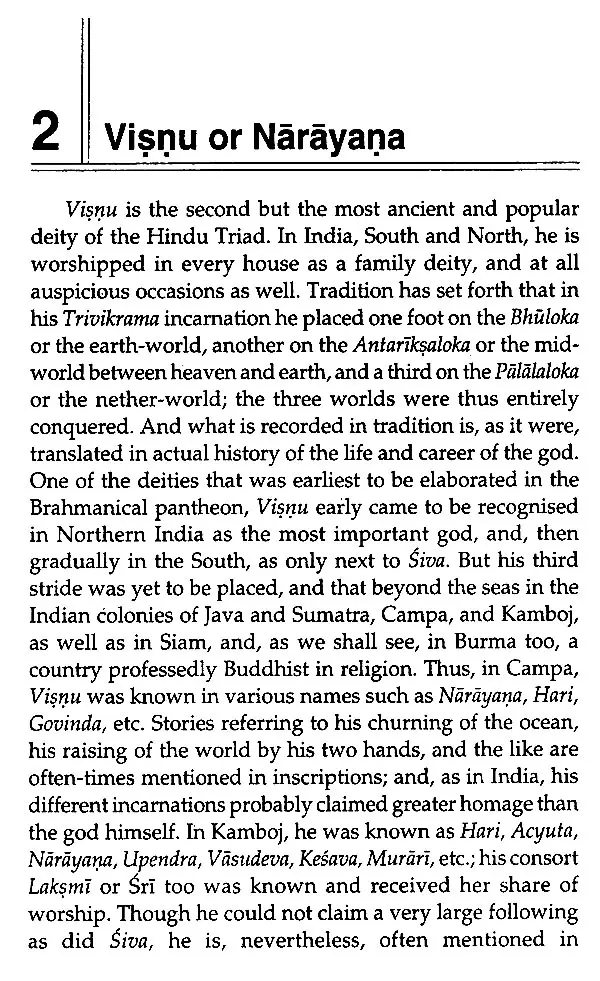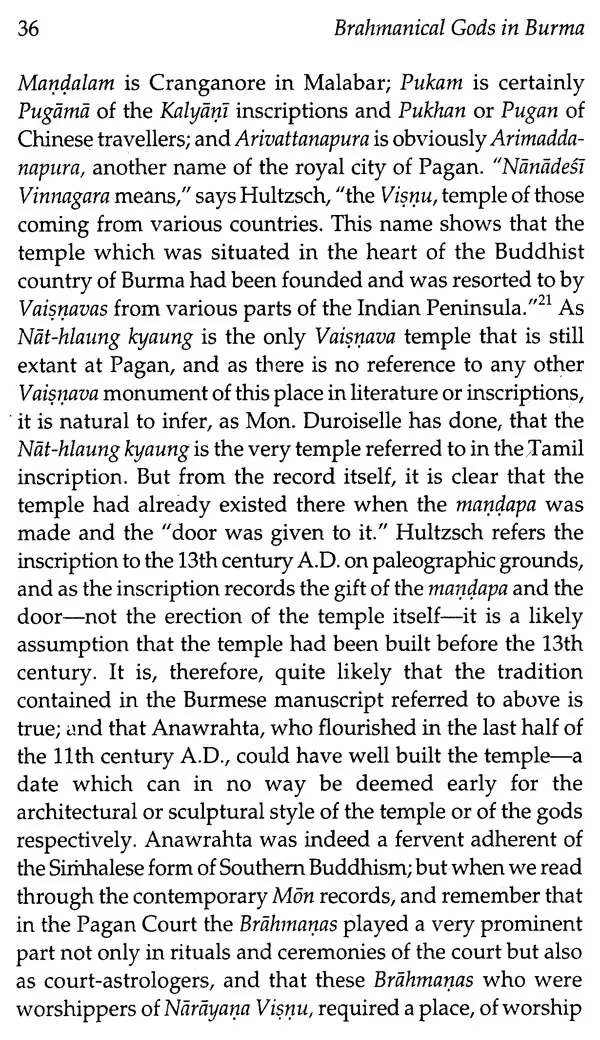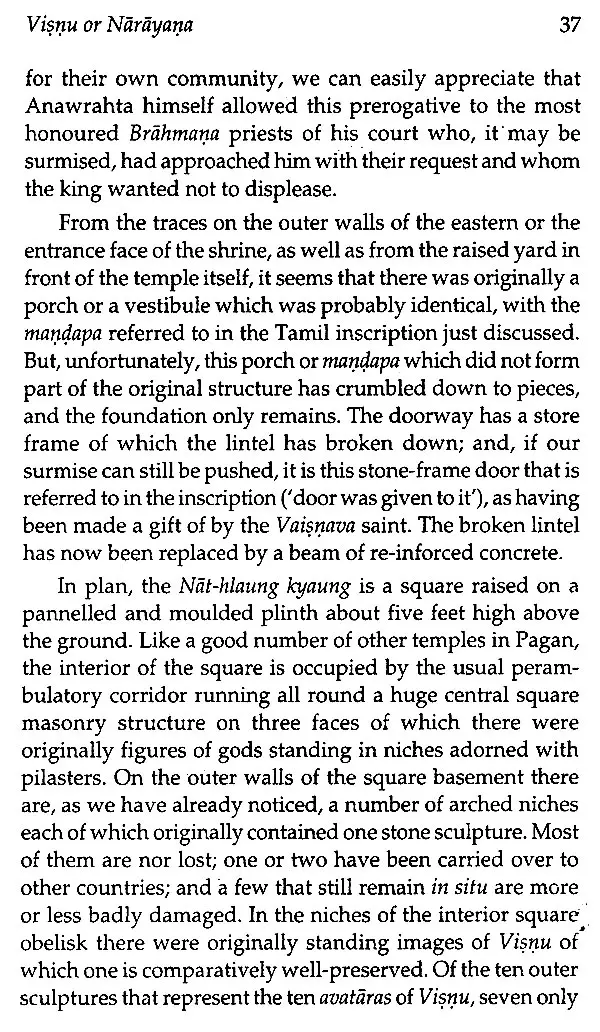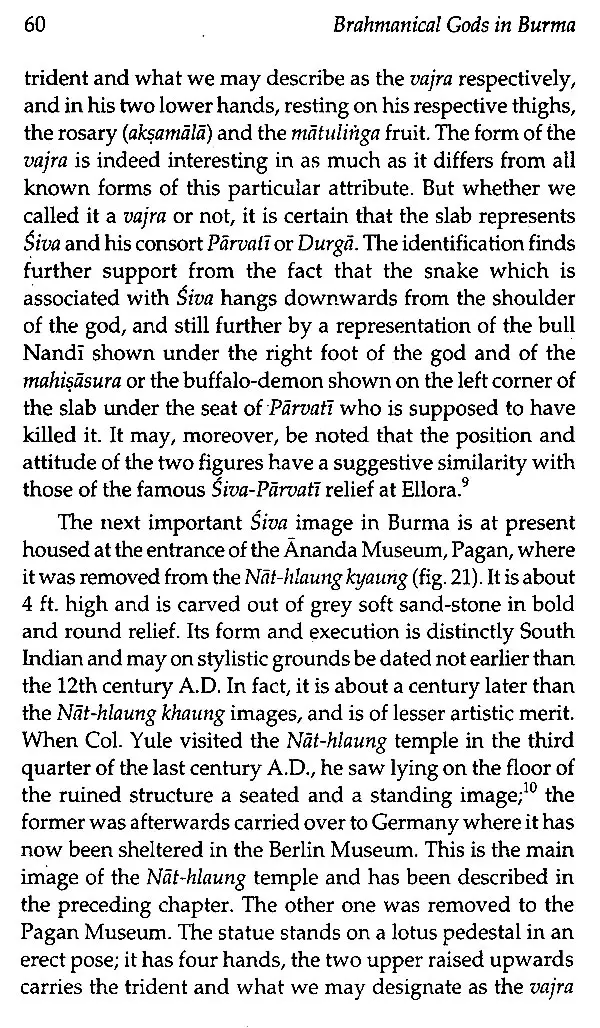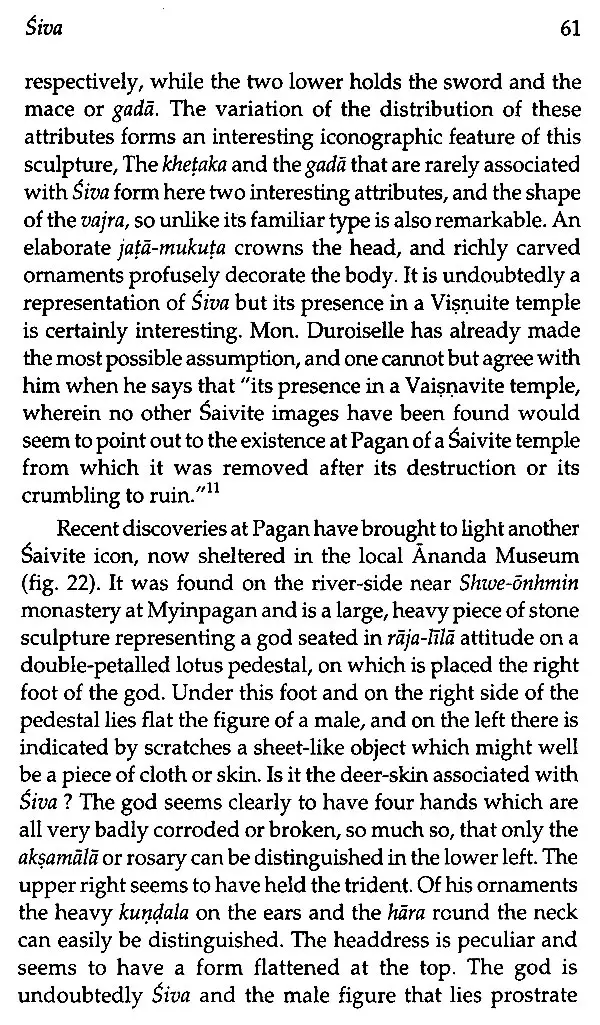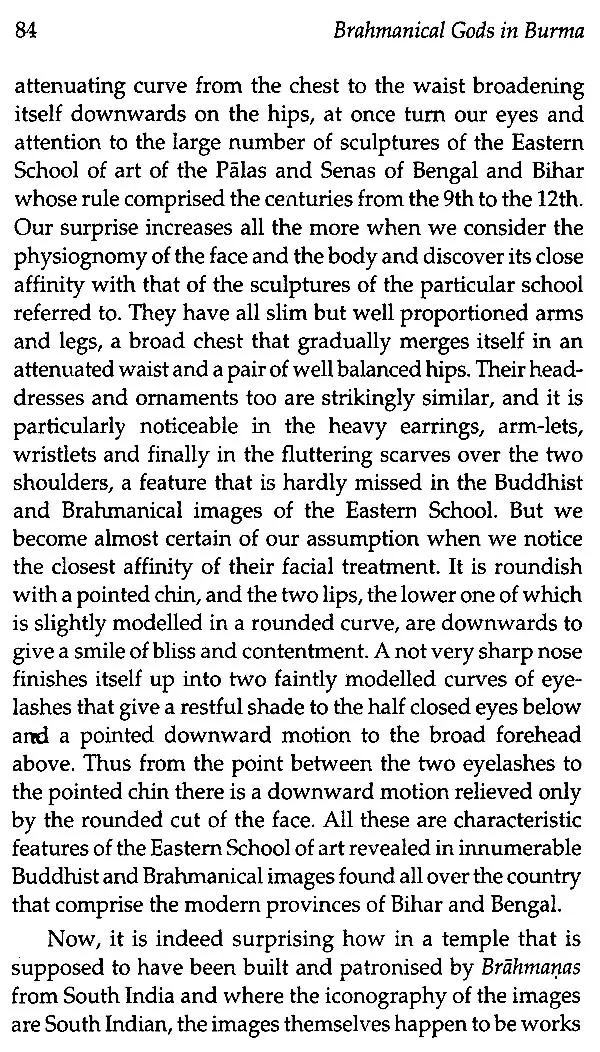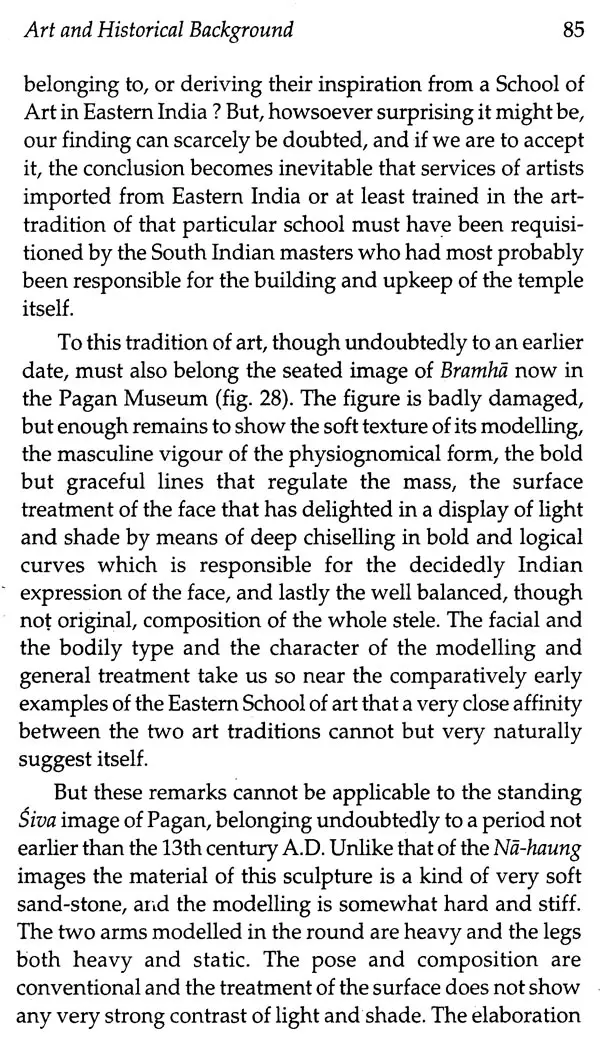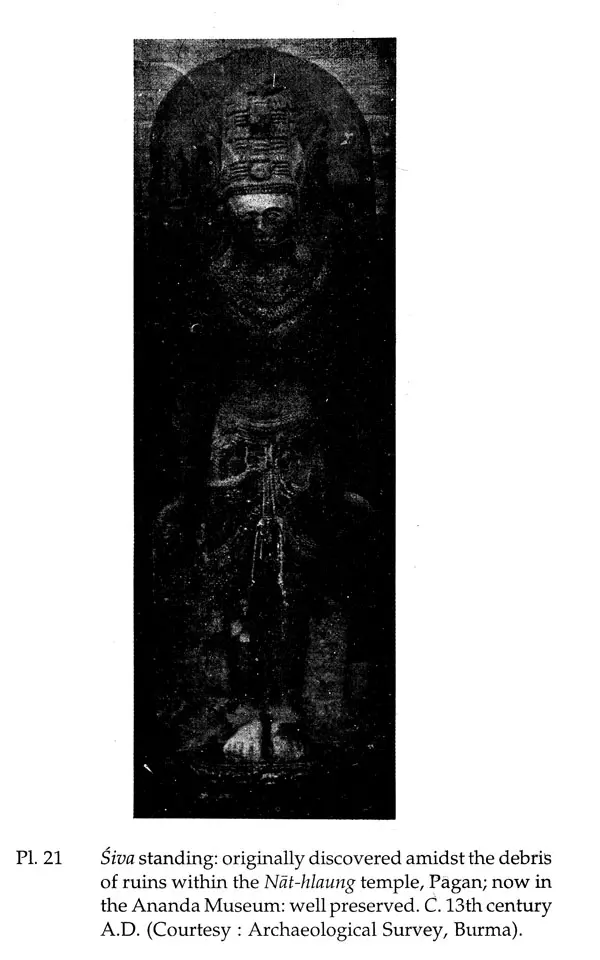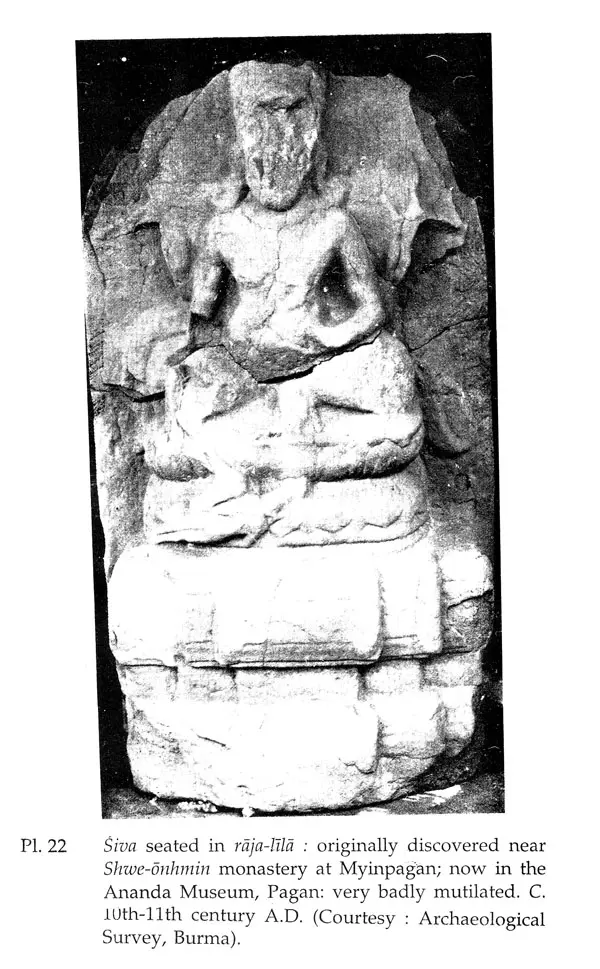
Brahmanical Gods in Burma- Indian Art and Iconography
Book Specification
| Item Code: | UAO408 |
| Author: | Nihar Ranjan Ray |
| Publisher: | Bharatiya Kala Prakashan |
| Language: | English |
| Edition: | 2010 |
| ISBN: | 9788180902567 |
| Pages: | 151 (Throughout B/w Illustrations) |
| Cover: | HARDCOVER |
| Other Details | 9.00 X 6.00 inch |
| Weight | 340 gm |
Book Description
Both geographically and culturally Burma is a projection of the Indian continent, and formed a part of Indo-China and ancient Campa, Kamboj and Siam-Laos. Attention of scholars as well as of laymen has been drawn to the subject of Indian colonial enterprise in the past in those countries as well as in the island colonies of Java and Sumatra, Bali and Barneo where important archaeological discoveries have been made during the last twenty five years by French and Dutch scholars.
This monograph is an outcome of my studies and researches in the domain of Burmese Art, Archaeology and History that I have been pursuing for the last four years. My original subject was, and still is, a comprehensive study of the origin and history of Architecters in Burma-an almost untrodden field of study and reserch, but one that is gradually yielding results that would contribute, I hope, considerably to our advancement of knowledge of a very important aspect of early Indo-Burmese relations. In course of my studies and investigations on the spot in that connection, I was struck by the presence of a considerable number of Brahmanical images scattered all over the Peninsula interesting from both artistic as well as iconographic points of view. Professedly Buddhistic as Burma was from very early times, and still is, these images very naturally invited my attention, and a close preliminary observation convinced me that systematic iconographic and artistic study of them would be much help to my further studies in this field, especially in the study of Burmese monuments. Accordingly, I took it up, and here I put forward the record of my work.
Both geographically and culturally Burma is a projection of the Indian continent, and formed a part of Indo-China and ancient Campa, Kamboj and Siam-Laos. Attention of scholars as well as of laymen has been drawn to the subject of Indian colonial enterprise in the past in those countries as well as in the island colonies of Java and Sumatra, Bali and Barneo where important archaeological discoveries have been made during the last twenty-five years by French and Dutch scholars. But, unfortunately indeed, the same cannot equally be said of Burma; the amount of attention of Eastern and Western scholars, the study of the history and archaeology of this less-introductory know the Indian Orient is not what it ought to have been. In fact, archaeological study and investigation in Burma is a thing of recent devolopment; and whatever the Archaeological Department of Burma has done in the domain of Early Burmese History and Geography, Art and Archaeology, Iconography and Religion, and above all Epigraphy, during the last three decades in mainly the work of one man, Mon. Charles Duroiselle, lately Superintendent, Archaeological Survey, Burma. And, whosoever has worked or attempted to work, in the domain of Burmese History and Archaeology in recent years must, first of all, recognise and acknowledge with gratitude, as I do here, the researches carried out by him and his Department. To him, therefore, I dedicate this humble piece of work.
But, inspite of the valuable work he and his Department have done, the images studied and described in the following pages have not yet received their due recognition. No systematic study to bring out fully their iconographic significance and their learning upon ealry Indo-Burmese historical and cultural relations have yet been pursued. Most of them have not even been identified and some had even to be rediscovered from the debris of finds thing ago made. I, therefore, make no apalogy in presenting for one first time a detailed analytical study of these Brahmanical sages in all their bearings as the subject of a short monograph.
Burma is professedly Buddhist and follows the Pali Canon of the Southern School. The story of the introduction of Buddhism into Pagan in Upper Burma is well-known. It occurred in the third quarter of the 11th century A.D., when Pagan was fast rising into importance. There is no settled system of chronology before this, and systematic historical records are completely lacking with the exception of a few important events which folk-memory had taken care to preserve in native chronicles. The earliest epigraphic records found in Burma hail from Hmawza, a village five miles south of Prome, and, no doubt, date back to an earlier period, probably to the 5th or 6th century A.D., but no definite sequence of historical events can be reconstructed from them. As far as our present knowledge goes, early Burmese history has its beginnings at a time when we are in the thick of the medieval period of Indian history, and we are immediately introduced to a powerful dynasty of kings-zealous patrons and devoted followers of an Indian faith, the Southern Buddhism of the Pali Canon-ruling at Pagan. A Talaing monk of the Theravada School of Buddhism and an inhabitant of Thaton in Ramanñadeśa leltaic Burma), Shin Arahan, came over to Pagan in 1056 A.D., and lived there in a solitary corner of the citadel when he day, so the story goes, be was taken to the Court. He treated a great impression on the king with his yellow robe, this sublime purity of life and lofty graciousness of speech. The king of Pagan, Anawrahta asked: 'Master, of what race art thou? Whence comest thou? Whose doctrine dost thou follow?! Shin Arahan told him, and Anawrahta entreated him saying, 'My Lord, teach me somewhat, yea, though it be a little, of the religion preached by the Lord, the Master. Before long, the apostle's first step was accomplished, he had won authority to his side. But Shin Arahan had brought no sacred books, for writing was still a rare gift. His mission could not thrive without them and he urged Anawrahta to procure copies from Thaton where there were thirty complete sets of the Tripitaka, the Three Scriptures. Envoys were sent but returned with art insulting refusal. Stung to anger Anawrahta marched on Thaton with all his men."
At the end of a long siege Thaton ceased to be a royal city, and the victorious king of Pagan returned to the capital with the most valuable treasures of the Faith, a host of Buddhist monks, and with them thirty-two white elephants each laden with scriptures and relics, all belonging to Manuha, the Talaing king of Thaton. Thaton was annexed and Manuha kept a captive in Pagan; but, as has so often happened in history, the culture of the vanquished predominated over that of the victors, and the Southern Buddhism of Thaton gradually spread throughout Upper Burma.
Book's Contents and Sample Pages
